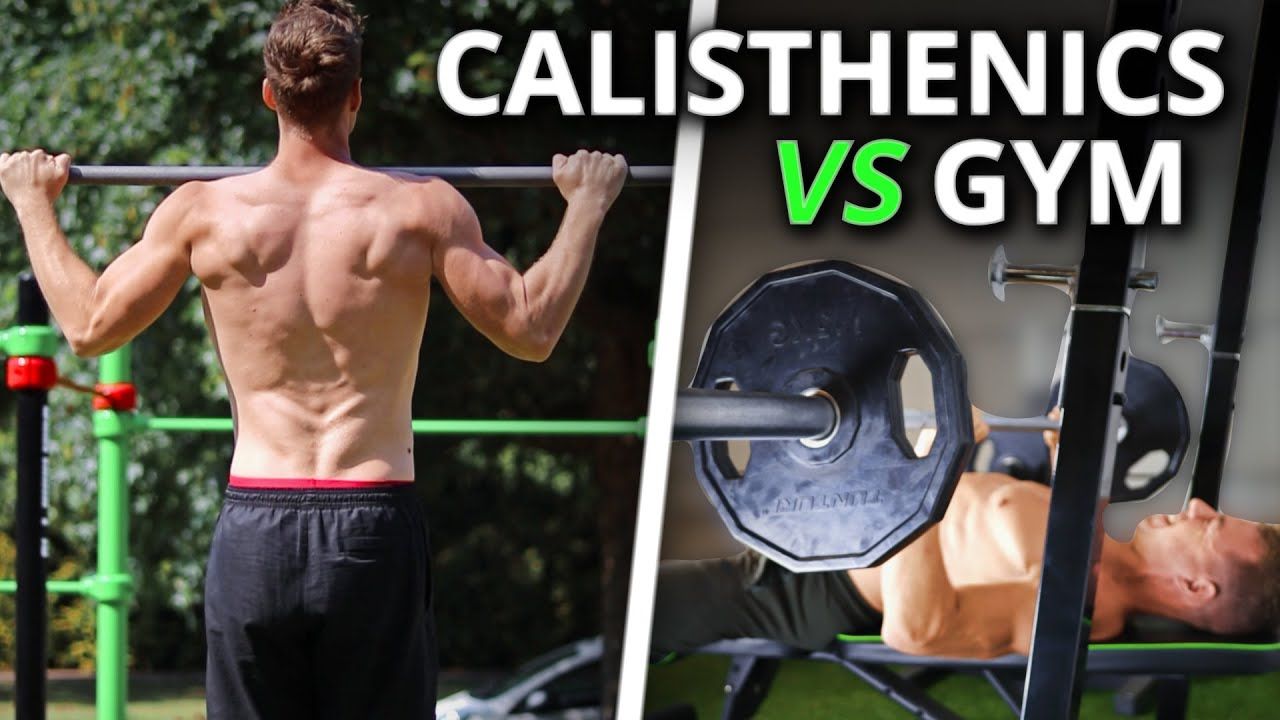When it comes to fitness and building strength, two popular workout styles often emerge – calisthenics and weight training. Both approaches have their own advantages and downsides, appealing to different individuals based on their goals, preferences, and fitness levels. In this article, we will explore the pros and cons of each, helping you make an informed decision on which might be the right fit for you.
Calisthenics
Calisthenics, also known as bodyweight training, involves performing exercises that rely solely on your body weight for resistance. It is a form of functional training that focuses on improving flexibility, mobility, balance, and overall body control. Calisthenics exercises include push-ups, pull-ups, squats, lunges, planks, and other movements that engage multiple muscle groups simultaneously.
Pros of Calisthenics:
Minimal Equipment: One of the notable advantages of calisthenics is that it can be done almost anywhere without the need for expensive equipment. This makes it accessible to a broader audience.
Improved Body Control: Calisthenics exercises require you to control and stabilize your body, leading to improved coordination and motor skills.
Functional Strength: Since calisthenics movements mimic real-life activities, they enhance your ability to perform everyday tasks effectively.
Increased Mobility: Regular calisthenics training can improve joint mobility and flexibility, increasing overall body range of motion.
Cons of Calisthenics:
Progression Limitations: Over time, increasing resistance in calisthenics can become challenging since you mainly rely on your body weight.
Lower Muscle Mass Development: While calisthenics can build muscle strength, it may not lead to significant muscle mass gains compared to weight training.
Advanced Skills Might Be Difficult: Progressing to advanced calisthenics moves, such as muscle-ups or planches, often requires considerable strength and practice.
Weight Training
Weight training, also known as resistance training or strength training, involves the use of external weights or resistance machines to build strength and muscle mass. It typically involves exercises using free weights like dumbbells, barbells, or weight machines found at the gym.
Pros of Weight Training:
Progressive Overload: The ability to increase resistance allows for steady progression and continual challenge, promoting muscle growth and strength gains.
Targeted Muscle Development: Weight training allows you to specifically target different muscle groups, making it suitable for aesthetic goals and bodybuilding.
Injury Prevention: Strength training can enhance bone density, joint stability, and muscular support, reducing the risk of injuries in daily activities.
Metabolic Benefits: Weight training can boost metabolism, leading to increased calorie burn even at rest, aiding in weight management.
Cons of Weight Training:
Equipment Dependency: Access to weights or resistance machines is necessary, usually requiring a gym membership or home gym setup.
Technical Skill Requirement: Proper form and technique are crucial in weight training to maximize results and minimize the risk of injury. It may require guidance from a trainer or experience to ensure proper execution.
Potential Overuse Injuries: Repetitive movements in weight training can lead to overuse injuries if not performed with proper form or without adequate rest and recovery.
Conclusion
Ultimately, the choice between calisthenics and weight training depends on your personal goals, preferences, and available resources. Calisthenics offers the advantage of minimal equipment, improved body control, and functional strength. However, weight training allows for progressive overload, targeted muscle development, and metabolic benefits. Consider your fitness level, desired outcomes, and accessibility to make an informed decision or even combine both approaches for a well-rounded fitness routine.
